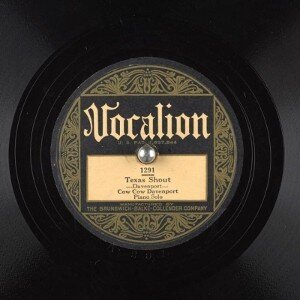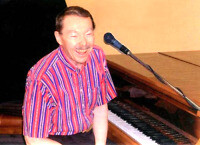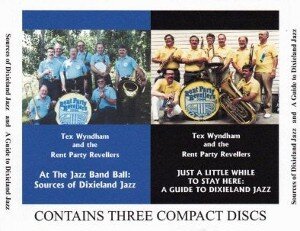A Note from the Editor: The past doesn’t repeat itself but it does rhyme and this column from 1990 is a stunning example of that. Tex discusses the growing ubiquity of handheld tape recorders at jazz festivals and events. Will they kill the market for albums? What are the social protocols?
Tex goes beyond these eternal questions for one not as often asked. How does all this amateur tape affect the music that is played, the critical ear of the listener, and which groups will get bookings? Are you doing the band any favors sharing your recording from a noisy barroom? The resonance with today, with most bands getting heard more on amateur Youtube videos than on albums, is obvious.
Set forth below is the sixth “Texas Shout” column. It first appeared in the May 1990 issue of The American Rag(then West Coast Rag).
Hand-held tape recorders are ubiquitous. Everything played these days by any jazzman from the stage of any festival or sizeable jazz club is recorded by someone and exists somewhere in one or more living rooms.
Of course, this situation has created a nightmare for discographers, but that’s not what I want to discuss today. After all, discographers, invaluable though they are, seem to enjoy impossible assignments that no one in his right mind would undertake. Instead, I want to talk about the effects of this boom in private recordings on the music that’s heard on the Dixieland circuit.
Many musicians object in principle to having their music recorded by individuals in the audience. I am not one of them. If you’ve paid your money to see my show, and you want to take my music home with you to re-hear in your home for your own enjoyment, it’s OK with me. I feel rather complimented, in fact. Now that you know where I stand on this commonly discussed aspect of portable recorders, let’s move on.
Many musicians and record producers point out that, to the extent that people elect to do their listening to their in-person tapes, the market for sales of commercial recordings will be damaged. There can be no question that this point has merit.
If you would otherwise have purchased a recording by an artist, and you decide not to do so because you’re just as happy with the tape you made from your seat, overall demand will be reduced with the inevitable result that fewer commercial recordings will appear. Those that are issued will need to be more cheaply produced in order to be economical in a shrinking market. Further, this reduction in demand will tend to diminish whatever minimal incentives still exist to encourage musicians to play Dixieland vs. whatever other music they might choose.
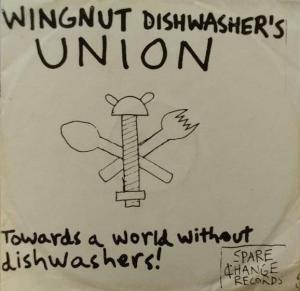 However, while I do regret such developments, I can’t weep too much about them. Except for the veteran jazzmen who have always made their living playing Dixieland and can’t really do anything else (and few of them survive at this writing), Dixieland jazz today is almost 100% a hobby music. It has not been commercially viable for decades. Most younger musicians who enter the field full-time do so with their eyes open to the hazards thereof. The overwhelming majority of Dixieland musicians and record producers are persons who do not depend on jazz for their livelihoods.
However, while I do regret such developments, I can’t weep too much about them. Except for the veteran jazzmen who have always made their living playing Dixieland and can’t really do anything else (and few of them survive at this writing), Dixieland jazz today is almost 100% a hobby music. It has not been commercially viable for decades. Most younger musicians who enter the field full-time do so with their eyes open to the hazards thereof. The overwhelming majority of Dixieland musicians and record producers are persons who do not depend on jazz for their livelihoods.
In that situation, the diminution of the market for recordings means that, for many Dixielanders, their hobby will cost them a little more than it would have otherwise. Because they never went into Dixieland for the money anyway, and because Dixieland records haven’t sold in enough quantity recently to provide much of anyone with significant financial rewards, the economics of the record marketplace shouldn’t detain us for long.
What bothers me is the effect on the aesthetic sensibility of the audience as it becomes increasingly conditioned to appreciating music via amateur in-person tapes. I will categorically say that any tape made from a seat in the audience, or from a table at a jazz club, will not contain the musical subtleties that were played by the musicians on stage. Those nuances, those fine points that separate the ordinary jazz from the truly outstanding, are lost in the echo, crowd noise, chatter, poor balance, tinkling of glasses, etc., that invariably appear on material recorded from a spot in the crowd.
If essentially all of your listening library consists of such recordings, I can confidently state that you have not fully learned how to appreciate Dixieland jazz and that you do not understand it as well as you think you do. You are not in a position to request producers to book the best bands, because you are not entirely able to distinguish which ones they are.
To the extent that this situation is becoming more prevalent on the circuit, a standard is being established that settles closer to mediocrity. If a band has simply mastered the surface characteristics of the music — the only elements of it that will carry through into microphones sitting offstage –, many listeners will have no basis for distinguishing it from a combo that has depth. Producers, in many cases, will naturally come to disregard depth in hiring musicians if the audience doesn’t particularly want depth and if depth costs more money.
There is, however, a simple solution to this problem. Listen to your amateur tapes and enjoy them, by all means. However, do yourself a favor and be sure to buy, on some kind of regular basis, commercially-produced recordings and give them a fair listen as well. If you particularly like live sessions, that’s fine — the commercially-produced ones will typically be made from onstage microphones which, though problems of balance may still obtain, will screen out extraneous sound and give you a chance to understand all of what’s happening. It won’t be long before you’ll be able to tell the difference in musical quality, and the extra fun you’ll get from the music will more than repay you for the cost of the recordings.
Once you’ve done that, I have one small favor to ask. After you’ve taped my show, and taken it home and enjoyed it, please, please don’t make dubbings of the tape for other people. Just listen for your own amusement.
Here’s why I ask this favor. When you listen to your tape of a show you’ve seen, the tape brings back your memories of the in-person event. You don’t really hear the crowd chatter, the echoes, the fluctuations in level, because you’ve mentally been taken back to the scene where the recording was made.
I can understand why you might want to share that good time with your friends. However, it’s not possible to do so because they weren’t there. They have only what’s on your tape to hear, maybe by themselves in the cold surroundings of an expensive hi-fi setup without the benefit of the drinks, friends and congenial atmosphere that you remember when you hear your tape.
Believe me, in those circumstances your friends will notice any acoustical deficiency in the recording as if it were fingernails across a blackboard. Their adverse judgement thereof is very likely to fall on the artist, not on your recorder.
Thus, you do not do a jazzman a favor by mailing around home-made recordings of his shows. In fact, you are very likely to have exactly the opposite result. I can cite examples of excellent bands that were passed over for festivals because well-meaning fans had sent the producers, without the band’s knowledge, amateur tapes of the groups accompanied by requests that they be invited. The tapes sounded so bad that the producers resolved to waste no more effort on those bands; years elapsed before the producers could be persuaded to take up the subject anew in a proper way.
If you really want to help, believe me, you’re better off if you stick to praising your favorite artists verbally to your friends and to jazz show producers. An additional step you could take would be to find a way to get such people to hear commercially-produced recordings by those artists.

Finally, remember that paying to see a show does not create an automatic right to record it. If the club or festival has rules on the subject, cooperate with them. If you do record, don’t do anything that interferes with the ability of the other paying customers to enjoy the show (such as by putting mikes on booms or high stands that block a clear view of the stage, by running wires across the floor, by using an adjacent chair for sound equipment unless you buy an extra ticket for it, etc.). Don’t put recording gear on stage where the musicians will have to step around it, particularly in situations where there is not enough room for everyone with a recorder to exercise the same prerogative. And take the long view — after all, if you don’t get this particular session, there are plenty of others coming up on the calendar.
In short, let’s handle our hand-held recorders in a way that helps us improve the quality of the music and enjoy ourselves at the same time. If we do so, well get more happy and knowledgeable jazz fans in our neighborhoods and we’ll all be better off.
Back to the Texas Shout Index.
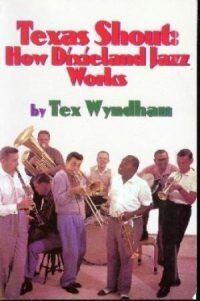
The full run of “Texas Shout” has been collected into a lavishly illustrated trade paperback entitled Texas Shout: How Dixieland Jazz Works. This book is available @ $20.00 plus $2.95 shipping from Tex Wyndham, On request, Tex will autograph the book and add a personalized note (be sure to tell him to whom the note should be addressed).
Tex Wyndham’s 3 CD Guide to Dixieland with music and commentary is available for $20 plus $2.95 shipping. The separate CD, A History of Ragtime: Tex Wyndham Live At Santa Rosa, is available for $13.00 plus $2.00 shipping. On request, Tex will autograph the inner sleeve and add a personalized note (be sure to tell him to whom the note should be addressed).
Send payment to Tex Wyndham, P.O. Box 831, Mendenhall, PA 19357, Phone (610) 388-6330.
Note: All links, pictures, videos or graphics accompanying the Shouts were added at the discretion of the Syncopated Times editorial staff. They did not accompany the original columns and do not necessarily reflect the opinion of Tex Wyndham.
From roughly 1970-2010, Tex Wyndham was: (1) one of the best-known revivalist Dixieland jazz musicians in the US, as cornetist, pianist and bandleader, (2) one of the best-known ragtime pianists in the US, and (3) one of the most respected critics in the US of Dixieland jazz, ragtime, and related music. He is the only person about whom all three of those statements can be made.

